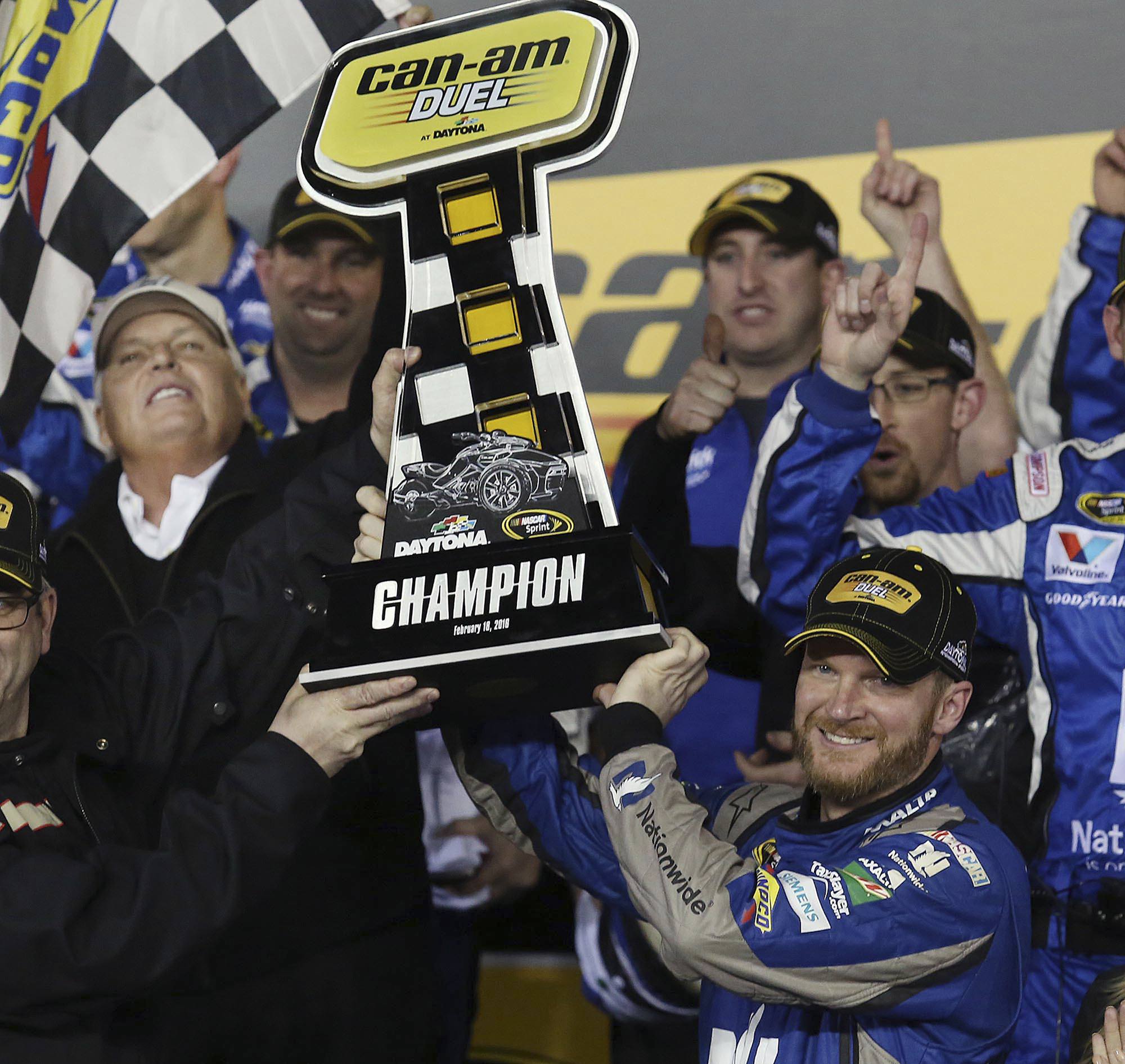Dale Earnhardt Jr. tossed and turned in his bed Tuesday night, unable to sleep just hours before he would drive in a test session Wednesday at Darlington (S.C.) Raceway.
Earnhardt is usually nervous before he climbs into his No. 88 Chevy. But the anxiety for Wednesday’s test was higher: This was to see if he would be cleared to race in 2017 after he missed 18 races in 2016 because of a concussion.
“I have nerves and butterflies every time I get in a race car,” Earnhardt said during a teleconference Friday. “And once I got in my (fire) suit (Wednesday), I was wondering if the car was ready to go. I couldn’t wait to get in the car and see what it felt like.”
It felt fine — more than fine, as it turns out. After a test session that lasted most of the day, Earnhardt was declared healthy by his doctors and cleared to return to racing, beginning with the season-opening Daytona 500 in February.
“It was great,” Earnhardt said. “I got more and more confident in the car as we went along. It felt like an old shoe by the end of the day.”
Earnhardt, 42, sustained the concussion in a race at Michigan International Speedway in June. It was at least the third of his career, with him also suffering two concussions in 2012.
Earnhardt’s return has been marked by months of rehabilitation, led by Dr. Micky Collins, medical director of the University of Pittsburgh Medical Center Sports Medicine Concussion Program, and Charlotte neurosurgeon Dr. Jerry Petty, who accompanied Earnhardt to Darlington.
Earnhardt said Petty performed a baseline evaluation before the test. Earnhardt then drove a total of 185 laps in 15-to-30 lap segments, broken up with 20-minute breaks.
“He was checking everything — visual, my strength, throughout the process,” Earnhardt said. “I got acclimated with the speed and what it takes to drive the race car. Those systems actually strengthened throughout the process. Rather than flat line and stay the same, they got stronger. So it was good to get some reassurance.”
Earnhardt said that, except for a new helmet, he won’t have any new safety equipment in place when he returns to racing. He also said his rehab has made him healthier than he was before. Because of that, he said, he is not overly concerned about the potential damage another concussion could do.
“We worked not only to get healthy and back to being a normal human being again, but we worked to get stronger than we were before,” Earnhardt said. “I wouldn’t want to get back into the seat and be excited about driving if there was a risk other than the typical risk of driving on Sunday. We all feel pretty confident that not only am I as healthy as I was before the (concussion) symptoms came … but I’m actually stronger.”
Another hallmark of Earnhardt’s recovery process was his very public acknowledgment of the injury and what he was going through. He gave several news conferences about his condition and also talked about it frequently on his podcast.
Earnhardt deflected credit for any part he might have played in increasing concussion awareness.
“It’s not something I intentionally wanted to spearhead,” he said. “But I have seen the culture change tremendously, with everyone, not just athletes. We’re learning something new every day. People are becoming much more aware.”
With his health back and knowing he will race again, Earnhardt can now concentrate on a busy offseason. He said he will test again soon at Phoenix International Raceway. He continues with sponsor obligations and said he expects to sign a contract extension with Hendrick Motorsports before the season begins.
He is also getting married to Amy Reimann on Dec. 31.
“I’m confident in what I’ve seen in myself with the improvement in my health and in my future,” Earnhardt said. “The doctors say there’s the risk of withstanding the normal wear and tear of driving a race car. There could be an unfortunate accident, at the same time. But having gone through this has given me confidence. It isn’t uncharted territory.”


